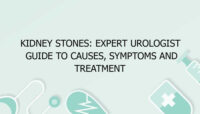Restless Legs Syndrome: Causes, Symptoms, and Treatment
Restless Legs Syndrome (RLS) is a neurological disorder characterized by an uncontrollable urge to move the legs, typically accompanied by uncomfortable sensations. This condition often disrupts sleep and can significantly impact an individual’s quality of life. Understanding the causes, symptoms, and treatment options for Restless Legs Syndrome is essential for effective management and relief.
Understanding Restless Legs Syndrome
Restless Legs Syndrome, sometimes referred to as Willis-Ekbom Disease, is a condition that affects the legs and occasionally other parts of the body. It is characterized by a compelling need to move the legs, often accompanied by uncomfortable or unpleasant sensations. These sensations typically occur during periods of inactivity or rest and are temporarily relieved by movement. RLS can affect people of all ages but is most commonly observed in middle-aged and older adults.
Causes of Restless Legs Syndrome
The exact cause of Restless Legs Syndrome is not fully understood, but several factors are believed to contribute to its development:
1. Genetic Factors
Research suggests that genetics play a significant role in Restless Legs Syndrome. Many individuals with RLS have a family history of the condition, indicating a hereditary component. Specific genetic mutations and variations have been linked to the development of RLS, although the exact genes involved are still being studied.
2. Iron Deficiency
Iron deficiency is one of the most well-documented factors associated with Restless Legs Syndrome. Iron is crucial for the proper functioning of dopamine, a neurotransmitter involved in regulating movement. Low iron levels can impair dopamine function, leading to the symptoms of RLS. Iron deficiency anemia is often observed in individuals with RLS, and addressing iron levels can sometimes alleviate symptoms.
3. Dopamine Dysfunction
Dopamine dysfunction is thought to play a central role in Restless Legs Syndrome. Dopamine is a neurotransmitter that helps regulate motor control and coordination. Abnormalities in dopamine pathways can lead to the involuntary movements and uncomfortable sensations associated with RLS. This dysfunction is often related to the iron deficiency mentioned earlier, as iron is essential for dopamine synthesis.
4. Chronic Diseases
Certain chronic diseases and conditions are associated with an increased risk of developing Restless Legs Syndrome. Conditions such as diabetes, kidney disease, and Parkinson’s disease can contribute to or exacerbate RLS symptoms. These chronic conditions may impact iron levels, dopamine function, or the nervous system, leading to the development of RLS.
5. Pregnancy
Pregnancy is another factor that can trigger or worsen Restless Legs Syndrome. Hormonal changes, increased blood volume, and iron deficiency commonly associated with pregnancy can contribute to RLS symptoms. For many women, RLS symptoms improve after childbirth, although some may continue to experience symptoms postpartum.
6. Medications
Certain medications have been linked to the onset or worsening of Restless Legs Syndrome. These include antidepressants, antipsychotics, and some antihistamines. Medications that impact dopamine levels or have sedative effects can exacerbate RLS symptoms. It is important for individuals experiencing RLS symptoms to discuss their medication use with a healthcare provider.
Symptoms of Restless Legs Syndrome
The symptoms of Restless Legs Syndrome are primarily characterized by an irresistible urge to move the legs, often accompanied by uncomfortable sensations. These symptoms can vary in severity and may include:
1. Uncomfortable Sensations
Individuals with Restless Legs Syndrome often describe the sensations in their legs as crawling, tingling, itching, or aching. These sensations are typically felt deep within the legs and can be difficult to describe. The discomfort usually occurs when at rest or lying down and is temporarily relieved by movement.
2. Urge to Move
The primary symptom of Restless Legs Syndrome is an intense urge to move the legs. This urge is often accompanied by the uncomfortable sensations described above. Movement, such as stretching, walking, or pacing, temporarily relieves the symptoms, but they may return once the individual is at rest again.
3. Symptoms Worsen at Night
Restless Legs Syndrome symptoms are typically worse in the evening and at night. The discomfort and urge to move may become more pronounced when lying in bed, leading to difficulty falling asleep or staying asleep. This can result in significant sleep disturbances and daytime fatigue.
4. Sleep Disturbances
Due to the nighttime worsening of symptoms, individuals with Restless Legs Syndrome often experience sleep disturbances. Difficulty falling asleep, frequent awakenings, and restless sleep can lead to chronic sleep deprivation and affect overall quality of life.
5. Symptom Fluctuations
The severity and frequency of Restless Legs Syndrome symptoms can fluctuate over time. Some individuals may experience intermittent symptoms, while others may have persistent or progressively worsening symptoms. Stress, lifestyle factors, and changes in health can impact symptom patterns.
Diagnosing Restless Legs Syndrome
Diagnosing Restless Legs Syndrome involves a combination of medical history, symptom assessment, and sometimes laboratory tests. There is no single definitive test for RLS, but the following steps are commonly used in the diagnostic process:
1. Medical History
A healthcare provider will begin by taking a detailed medical history, including information about symptoms, their onset, and any potential triggers. Family history of RLS or related conditions may also be discussed.
2. Symptom Evaluation
The diagnosis of Restless Legs Syndrome is primarily based on the characteristic symptoms, including the urge to move the legs, uncomfortable sensations, and symptom relief with movement. The symptoms must occur at rest and worsen in the evening or night.
3. Laboratory Tests
Laboratory tests may be conducted to identify underlying conditions that could contribute to RLS symptoms. This may include blood tests to check for iron deficiency, anemia, or other metabolic or chronic conditions. In some cases, tests may be done to assess dopamine levels or rule out other neurological disorders.
4. Sleep Studies
In cases where sleep disturbances are significant, a sleep study may be recommended. Polysomnography can help assess the impact of RLS on sleep quality and identify any associated sleep disorders, such as periodic limb movement disorder.
Treatment Options for Restless Legs Syndrome
Treatment for Restless Legs Syndrome aims to alleviate symptoms, improve sleep, and address any underlying causes or contributing factors. Treatment options may include lifestyle changes, medications, and complementary therapies:
1. Lifestyle Changes
Making certain lifestyle changes can help manage Restless Legs Syndrome symptoms:
- Regular Exercise: Engaging in regular physical activity, such as walking or stretching exercises, can help reduce symptoms and improve overall well-being. However, it is important to avoid excessive exercise close to bedtime, as this may exacerbate symptoms.
- Sleep Hygiene: Practicing good sleep hygiene, such as maintaining a regular sleep schedule, creating a comfortable sleep environment, and avoiding stimulants like caffeine before bedtime, can help improve sleep quality.
- Stress Management: Managing stress through relaxation techniques, such as deep breathing, meditation, or yoga, can help alleviate RLS symptoms and improve overall health.
- Dietary Changes: Ensuring adequate intake of iron and other essential nutrients through a balanced diet can help address iron deficiency and support overall health. Foods rich in iron include lean meats, legumes, and leafy greens.
2. Medications
Several medications are used to treat Restless Legs Syndrome, and the choice of medication depends on the severity of symptoms and individual response. Commonly prescribed medications include:
- Dopamine Agonists: Medications such as pramipexole and ropinirole are used to increase dopamine activity in the brain, which can help alleviate RLS symptoms. These medications are often effective but may have side effects such as nausea or dizziness.
- Iron Supplements: If iron deficiency is identified, iron supplements may be prescribed to improve iron levels and alleviate symptoms. It is important to follow the recommended dosage and consult a healthcare provider before starting supplements.
- Anticonvulsants: Medications such as gabapentin and pregabalin are sometimes used to manage RLS symptoms, particularly when associated with nerve pain or discomfort.
- Opioids: In severe cases where other treatments are ineffective, opioids may be prescribed on a short-term basis to manage pain and discomfort associated with RLS. Due to the risk of dependence, opioids are typically used as a last resort.
3. Complementary Therapies
Complementary therapies may provide additional relief for individuals with Restless Legs Syndrome:
- Massage Therapy: Massaging the legs can help alleviate muscle tension and discomfort associated with RLS. Regular massage sessions may provide temporary relief from symptoms.
- Warm or Cold Compresses: Applying warm or cold compresses to the legs can help soothe discomfort and reduce symptoms. Alternating between heat and cold may be effective for some individuals.
- Acupuncture: Some individuals find relief from RLS symptoms through acupuncture, a traditional Chinese medicine practice that involves inserting thin needles into specific points on the body to improve energy flow and alleviate discomfort.
Living with Restless Legs Syndrome
Living with Restless Legs Syndrome can be challenging, particularly when symptoms disrupt sleep and daily activities. However, effective management strategies can help improve quality of life and reduce the impact of RLS:
1. Support Networks
Connecting with support groups or communities for individuals with Restless Legs Syndrome can provide emotional support, practical advice, and a sense of shared experience. Support networks can help individuals feel less isolated and more empowered in managing their condition.
2. Ongoing Monitoring
Regular follow-up with a healthcare provider is important for monitoring the effectiveness of treatment and adjusting management strategies as needed. Ongoing assessment of symptoms and response to treatment can help optimize care and improve overall outcomes.
3. Education and Awareness
Educating oneself about Restless Legs Syndrome, its symptoms, and treatment options is crucial for effective management. Staying informed about the latest research and advancements in RLS treatment can help individuals make informed decisions about their care.
FAQs
What are the main symptoms of Restless Legs Syndrome?
The main
symptoms of Restless Legs Syndrome (RLS) include an irresistible urge to move the legs, often accompanied by uncomfortable sensations such as crawling, tingling, or aching. These symptoms typically occur during periods of inactivity, such as when lying down or sitting for long periods. Movement, such as stretching or walking, temporarily relieves the discomfort. RLS symptoms often worsen in the evening or at night, leading to difficulties with sleep and potential daytime fatigue.
What causes Restless Legs Syndrome?
Restless Legs Syndrome (RLS) can be caused by a variety of factors, including genetic predisposition, iron deficiency, and dopamine dysfunction. Genetic factors may play a significant role, as RLS often runs in families. Iron deficiency can impair dopamine function, which is crucial for regulating movement. Chronic diseases, such as diabetes and kidney disease, may also contribute to RLS. Pregnancy and certain medications may exacerbate symptoms. The exact cause of RLS is not fully understood, and it may involve a combination of these factors.
How is Restless Legs Syndrome diagnosed?
Diagnosing Restless Legs Syndrome (RLS) involves a comprehensive assessment of symptoms and medical history. Healthcare providers typically evaluate the characteristic symptoms, such as the urge to move the legs and relief through movement. Laboratory tests may be conducted to check for iron deficiency or other underlying conditions. In some cases, sleep studies may be recommended to assess the impact of RLS on sleep quality and identify any associated sleep disorders. Diagnosis is primarily based on clinical criteria and symptom evaluation.
What are the treatment options for Restless Legs Syndrome?
Treatment options for Restless Legs Syndrome (RLS) include lifestyle changes, medications, and complementary therapies. Lifestyle changes, such as regular exercise, good sleep hygiene, and stress management, can help alleviate symptoms. Medications, such as dopamine agonists, iron supplements, and anticonvulsants, may be prescribed to manage symptoms and address underlying causes. Complementary therapies, such as massage therapy, warm or cold compresses, and acupuncture, may provide additional relief. Treatment plans should be individualized based on the severity of symptoms and response to therapy.
Can Restless Legs Syndrome be cured?
Restless Legs Syndrome (RLS) does not currently have a cure, but symptoms can often be managed effectively with appropriate treatment and lifestyle changes. The goal of treatment is to alleviate symptoms, improve sleep quality, and address any underlying causes or contributing factors. While some individuals may experience significant relief and improved quality of life, RLS is a chronic condition that may require ongoing management. Regular follow-up with a healthcare provider is important for optimizing treatment and addressing any changes in symptoms.
Is Restless Legs Syndrome related to other health conditions?
Restless Legs Syndrome (RLS) is often associated with other health conditions, particularly those that affect iron levels, dopamine function, or the nervous system. Conditions such as iron deficiency anemia, diabetes, kidney disease, and Parkinson’s disease are commonly linked to RLS. Pregnancy can also trigger or worsen RLS symptoms. Addressing underlying health conditions and managing comorbidities can help improve RLS symptoms and overall health.
What lifestyle changes can help manage Restless Legs Syndrome?
Lifestyle changes that can help manage Restless Legs Syndrome (RLS) include engaging in regular physical activity, such as walking or stretching exercises. Practicing good sleep hygiene, such as maintaining a regular sleep schedule and creating a comfortable sleep environment, can improve sleep quality. Managing stress through relaxation techniques, such as deep breathing or meditation, may also provide relief. Ensuring adequate intake of iron and other essential nutrients through a balanced diet can help address iron deficiency. Avoiding stimulants like caffeine before bedtime is also beneficial.
Are there any home remedies for Restless Legs Syndrome?
Home remedies for Restless Legs Syndrome (RLS) may provide additional relief alongside conventional treatments. These include applying warm or cold compresses to the legs, using a heated blanket, and practicing leg massages to reduce discomfort. Relaxation techniques, such as deep breathing exercises and progressive muscle relaxation, may help alleviate symptoms. Ensuring a comfortable and supportive sleep environment can improve sleep quality. While these remedies may offer temporary relief, it is important to consult with a healthcare provider for a comprehensive treatment plan.
How does Restless Legs Syndrome affect sleep?
Restless Legs Syndrome (RLS) can significantly impact sleep quality due to the nighttime worsening of symptoms. The urge to move the legs and uncomfortable sensations often occur when lying down, making it difficult to fall asleep or stay asleep. Frequent awakenings and restless sleep can lead to sleep deprivation and daytime fatigue. Managing RLS symptoms effectively is crucial for improving sleep quality and overall well-being. Treatment options, including lifestyle changes and medications, can help alleviate symptoms and reduce their impact on sleep.
Can Restless Legs Syndrome be prevented?
While Restless Legs Syndrome (RLS) cannot always be prevented, certain strategies may help reduce the risk of developing or exacerbating symptoms. Maintaining a healthy lifestyle, including regular physical activity, a balanced diet, and good sleep hygiene, can support overall health and potentially minimize RLS symptoms. Addressing iron deficiency and managing chronic conditions that may contribute to RLS are also important. For individuals with a family history of RLS or those experiencing early symptoms, seeking medical advice and implementing preventive measures can help manage the condition more effectively.


